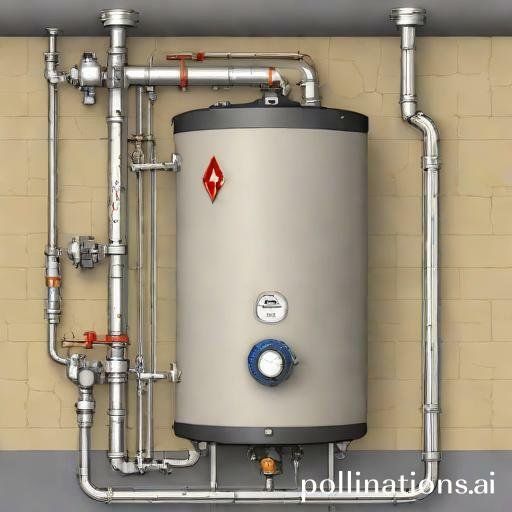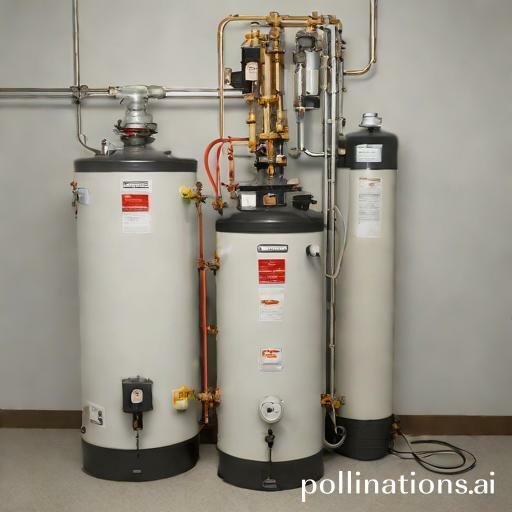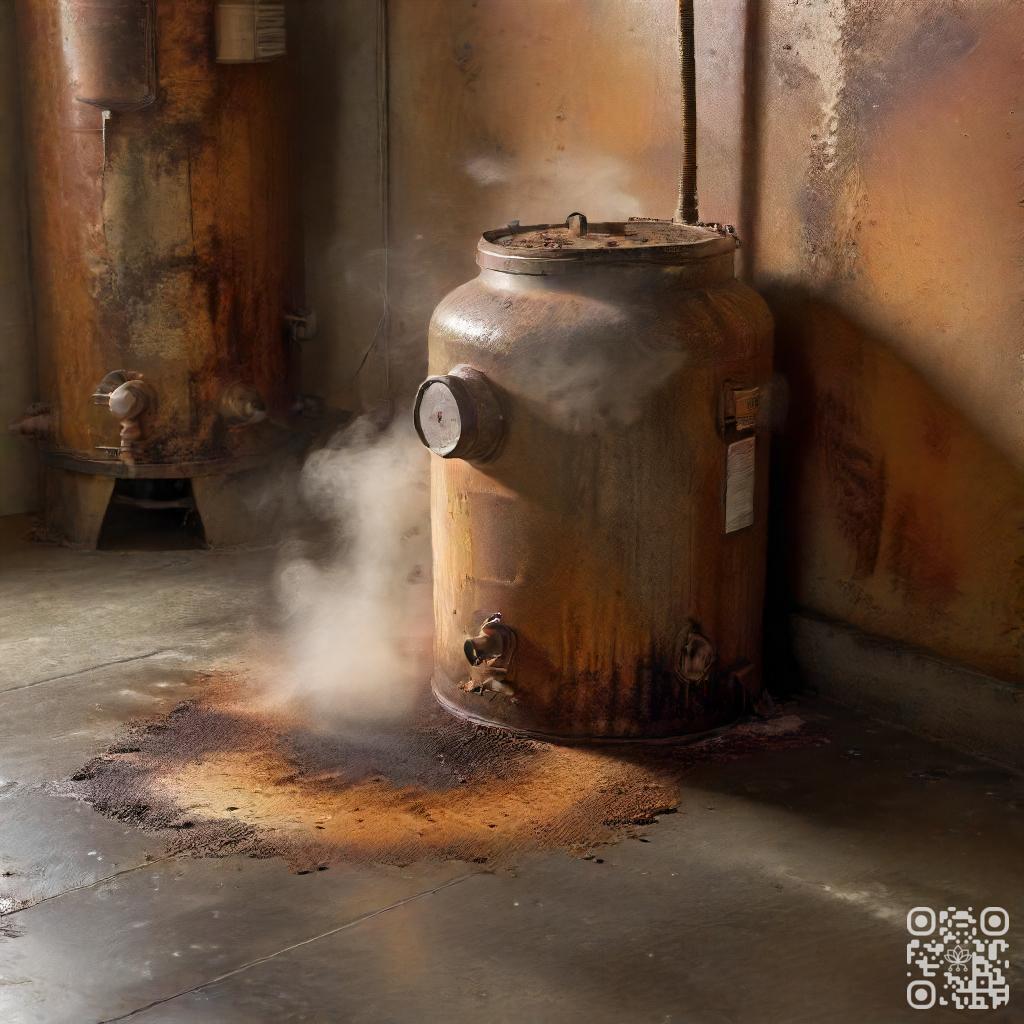
II. The sediment can act as an insulator, preventing the heat from reaching the water and causing the heating element to work harder than necessary.
III. Regular maintenance, such as flushing the tank and removing sediment, can help improve the efficiency and prolong the lifespan of the water heater.
Sediment buildup in a water heater can significantly impact its temperature. As sediment accumulates at the bottom of the tank, it acts as an insulator, making it harder for the heating element to transfer heat to the water.
This results in reduced efficiency and longer heating cycles, leading to increased energy consumption and higher utility bills. Additionally, sediment can cause corrosion and damage to the tank, shortening its lifespan.
Regular maintenance, such as flushing the tank to remove sediment, is crucial to ensure optimal water heater performance and temperature control.
Embracing Sediment Build-up in Water Heaters
1. What is sediment build-up?
Sediment build-up refers to the accumulation of minerals and other debris at the bottom of a water heater tank. Over time, water impurities such as calcium, magnesium, and sediment particles settle and form a layer of residue.
This sediment can vary in thickness and composition, depending on the water source and usage patterns. It is commonly found in areas with hard water, which has a high mineral content.
This build-up can lead to various issues if left unaddressed, affecting the performance and longevity of the water heater.
2. How does sediment affect water heater temperature?
Sediment acts as an insulating layer, preventing efficient heat transfer from the heating element to the water. As a result, the water heater needs to work harder and consume more energy to reach the desired temperature.
This can lead to longer heating cycles and increased energy bills. Additionally, the sediment layer can cause hot spots on the tank’s surface, resulting in uneven heating and potentially damaging the tank over time.
3. How does sediment impact water heater efficiency?
As sediment accumulates, it reduces the available space for water storage within the tank. This reduced capacity means the water heater needs to heat a smaller volume of water, resulting in more frequent heating cycles.
These frequent cycles can put additional strain on the water heater, leading to increased wear and tear, reduced efficiency, and a shorter lifespan.
Furthermore, sediment can clog the drain valve or the water lines, causing water flow restrictions and reduced water pressure in the household plumbing system.
It is essential to regularly flush and clean the water heater to remove sediment build-up and maintain optimal performance. Consulting a professional plumber can ensure proper maintenance and extend the lifespan of your water heater.
| Impact | Effect |
| Reduced efficiency | Increased energy consumption |
| Uneven heating | Potential tank damage |
| Reduced water storage capacity | More frequent heating cycles |
| Water flow restrictions | Reduced water pressure |
Signs of Sediment Build-up in Water Heaters
Water heaters play a crucial role in our daily lives, providing us with the comfort of hot water for various purposes. Nonetheless, over time, sediment build-up can occur in these appliances, leading to various issues. Fundamental to be aware of the signs indicating sediment build-up in water heaters to prevent any further damage and ensure their optimal performance.
1. Reduced hot water supply
One of the first signs of sediment build-up in water heaters is a noticeable decrease in hot water supply. As sediment accumulates at the bottom of the tank, it takes up space, leaving less room for water. This results in reduced hot water availability, making it challenging to meet your daily hot water needs. If you find yourself running out of hot water sooner than usual, it may be a sign of sediment build-up.
2. Strange noises from the water heater
If you start hearing unusual noises coming from your water heater, it could be an indication of sediment build-up. As the sediment settles at the bottom of the tank, the water heater has to work harder to heat the water. This can lead to rumbling, popping, or banging sounds as the heating elements come into contact with the sediment. Ignoring these noises can potentially lead to more significant issues in the future.
3. Increased energy bills
Another sign of sediment build-up in water heaters is a sudden increase in energy bills. As sediment accumulates, it acts as an insulating barrier between the heating elements and the water. This insulation reduces the efficiency of the water heater, forcing it to consume more energy to heat the water to the desired temperature. If you notice a significant spike in your energy bills without any other apparent reasons, sediment build-up could be the culprit.
Vital to address sediment build-up in water heaters promptly to avoid further complications. Regular maintenance, such as flushing the tank, can help prevent sediment accumulation and ensure the longevity of your water heater. Consulting a professional plumber is recommended for proper maintenance and addressing any sediment-related issues.
Preventing Sediment Build-up in Water Heaters
1. Flushing the water heater regularly
Regularly flushing your water heater is an effective way to prevent sediment build-up and maintain its efficiency. Sediment, such as minerals and debris, can accumulate in the bottom of the tank over time, reducing the heater’s performance and lifespan. Flushing the water heater involves draining the tank to remove the sediment.
Why is it important?
Flushing the water heater removes the sediment that can cause various issues. Sediment can lead to reduced heating efficiency, increased energy consumption, and even corrosion of the tank. By flushing the water heater regularly, you can ensure optimal performance and prolong its lifespan.
How to flush your water heater?
To flush your water heater, follow these steps:
- Turn off the power supply to the water heater.
- Connect a hose to the drain valve at the bottom of the tank.
- Place the other end of the hose in a suitable drainage area or connect it to a sump pump.
- Open a hot water faucet in your house to relieve pressure.
- Open the drain valve and let the water flow out until it runs clear.
- Close the drain valve and remove the hose.
- Turn on the power supply to the water heater.
2. Installing a water softener
Another effective method to prevent sediment build-up in water heaters is by installing a water softener. Hard water contains high levels of minerals, such as calcium and magnesium, which can contribute to sediment accumulation. A water softener removes these minerals, preventing sediment formation.
How does a water softener work?
A water softener uses ion exchange to remove the minerals responsible for hardness. It replaces calcium and magnesium ions with sodium ions, resulting in softened water. By using softened water in your water heater, you can significantly reduce the chances of sediment build-up.
3. Using a sediment filter
Installing a sediment filter in your water supply line can also help prevent sediment from reaching your water heater. A sediment filter traps debris and particles, preventing them from entering the water heater and causing build-up.
How does a sediment filter work?
A sediment filter typically consists of a porous material that captures sediment and other impurities. As water flows through the filter, it traps the particles, allowing only clean water to pass through. By regularly cleaning or replacing the sediment filter, you can maintain its effectiveness in preventing sediment build-up.
Preventing sediment build-up in water heaters is crucial for ensuring optimal performance and longevity. Flushing the water heater regularly, installing a water softener, and using a sediment filter are effective methods to keep your water heater free from sediment and maintain its efficiency.

Removing Sediment Build-up in Water Heaters
Water heaters are an essential part of any household, providing us with hot water for various needs. Over time, sediment can build up in the water heater tank, affecting its efficiency and performance. To ensure the optimal functioning of your water heater, integral to regularly remove this sediment. Here, we will guide you through the process of removing sediment build-up in water heaters.
1. Turning off the water heater
Before starting the sediment removal process, it is crucial to turn off the water heater. This will prevent any accidents and ensure your safety during the procedure. Locate the power supply or gas valve and switch it off.
2. Draining the water heater tank
Once the water heater is turned off, the next step is to drain the tank. Connect a hose to the drain valve, which is usually located at the bottom of the tank. Place the other end of the hose in a suitable drainage area, such as a floor drain or a bucket. Open the drain valve to allow the water to flow out.
3. Flushing the water heater tank
After draining the tank, it’s time to flush out the remaining sediment. Close the drain valve and remove the hose. Turn on the cold water supply to the water heater, and let it run for a few minutes. This will help in flushing out any remaining sediment particles.
Repeat the draining and flushing process a few times until the water runs clear and free of sediment. This will ensure that your water heater is free from any build-up that could hinder its performance.
| Steps | Description |
|---|---|
| 1 | Turn off the water heater |
| 2 | Drain the water heater tank |
| 3 | Flush the water heater tank |

Hiring a Professional for Sediment Build-up in Water Heaters
Sediment build-up in water heaters can lead to various issues such as reduced efficiency, increased energy consumption, and even damage to the water heater itself. To effectively address this problem, it is advisable to hire a professional water heater technician who can provide the necessary expertise and solutions.
1. Reasons to hire a professional
Hiring a professional for sediment build-up in water heaters offers several benefits:
- Expertise: Professionals have extensive knowledge and experience in dealing with sediment build-up issues. They can accurately assess the situation and determine the most appropriate course of action.
- Efficiency: Professionals have access to specialized tools and equipment that enable them to efficiently remove sediment from the water heater. This ensures thorough cleaning and optimal performance.
- Safety: Sediment removal can be a hazardous task, as it involves working with hot water and potentially harmful chemicals. Hiring a professional ensures that the process is carried out safely, minimizing the risk of accidents or injuries.
- Long-term savings: By hiring a professional, you can prevent further damage to your water heater caused by sediment build-up. This can help extend the lifespan of the appliance and save you money on costly repairs or replacements.
2. How much does it cost to hire a professional?
The cost of hiring a professional water heater technician can vary depending on several factors:
- Extent of sediment build-up: The severity of the sediment build-up can impact the overall cost. Heavily clogged water heaters may require more time and effort to clean, resulting in higher fees.
- Type of water heater: Different types of water heaters may require different cleaning methods. This can affect the cost of hiring a professional, as certain techniques or equipment may be more expensive.
- Location: The cost of services can also vary depending on the geographical location. Areas with a higher cost of living may have higher service charges.
- Additional services: Some professionals may offer additional services such as water heater maintenance or inspections, which can increase the overall cost.
3. What to look for in a professional water heater technician?
When hiring a professional water heater technician, consider the following factors:
- Experience and certifications: Look for a technician who has experience in dealing with sediment build-up in water heaters. Certifications or licenses can also indicate their expertise and professionalism.
- Reputation: Check online reviews or ask for recommendations to gauge the reputation of the technician or the company they work for. A reputable professional is more likely to provide reliable services.
- Insurance coverage: Ensure that the technician has adequate insurance coverage. This will protect you from liability in case of any accidents or damage that may occur during the service.
- Cost and warranty: Request quotes from multiple professionals and compare their prices. Additionally, inquire about any warranties or guarantees they offer for their services.
Bottom Line
Sediment buildup in water heaters can significantly affect the temperature and efficiency of the unit. The accumulation of minerals and debris can insulate the heating element, causing it to work harder and longer to heat the water. This can lead to higher energy bills and a shorter lifespan for the water heater. Regular maintenance, such as flushing the tank and checking the anode rod, can help prevent sediment buildup and ensure optimal performance. Pivotal to address sediment buildup promptly to avoid costly repairs or replacement of the water heater. By taking proactive measures to maintain the unit, homeowners can enjoy reliable hot water and save money in the long run.
Read More:
1. Addressing Water Heater Temperature Sensor Issues
2. What To Do If Water Heater Temperature Is Too Low?














